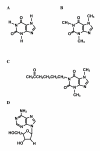Sperm preparation for ART
- PMID: 14617368
- PMCID: PMC293422
- DOI: 10.1186/1477-7827-1-108
Sperm preparation for ART
Abstract
The onset of clinical assisted reproduction, a quarter of a century ago, required the isolation of motile spermatozoa. As the indication of assisted reproduction shifted from mere gynaecological indications to andrological indications during the years, this urged andrological research to understand the physiology of male germ cell better and develop more sophisticated techniques to separate functional spermatozoa from those that are immotile, have poor morphology or are not capable to fertilize oocytes. Initially, starting from simple washing of spermatozoa, separation techniques, based on different principles like migration, filtration or density gradient centrifugation evolved. The most simple and cheapest is the conventional swim-up procedure. A more sophisticated and most gentle migration method is migration-sedimentation. However, its yield is relatively small and the technique is therefore normally only limited to ejaculates with a high number of motile spermatozoa. Recently, however, the method was also successfully used to isolate spermatozoa for intracytoplasmic sperm injection (ICSI). Sperm separation methods that yield a higher number of motile spermatozoa are glass wool filtration or density gradient centrifugation with different media. Since Percoll as a density medium was removed from the market in 1996 for clinical use in the human because of its risk of contamination with endotoxins, other media like IxaPrep, Nycodenz, SilSelect, PureSperm or Isolate were developed in order to replace Percoll. Today, an array of different methods is available and the selection depends on the quality of the ejaculates, which also includes production of reactive oxygen species (ROS) by spermatozoa and leukocytes. Ejaculates with ROS production should not be separated by means of conventional swim-up, as this can severely damage the spermatozoa. In order to protect the male germ cells from the influence of ROS and to stimulate their motility to increase the yield, a number of substances can be added to the ejaculate or the separation medium. Caffeine, pentoxifylline and 2-deoxyadenosine are substances that were used to stimulate motility. Recent approaches to stimulate spermatozoa include bicarbonate, metal chelators or platelet-activating factor (PAF). While the use of PAF already resulted in pregnancies in intrauterine insemination, the suitability of the other substances for the clinical use still needs to be tested. Finally, the isolation of functional spermatozoa from highly viscous ejaculates is a special challenge and can be performed enzymatically to liquefy the ejaculate. The older method, by which the ejaculate is forcefully aspirated through a narrow-gauge needle, should be abandoned as it can severely damage spermatozoa, thus resulting in immotile sperm.
Figures
References
-
- Edwards RG, Bavister BD, Steptoe PC. Early stages of fertilization in vitro of human oocytes matured in vitro. Nature. 1969;221:632–635. - PubMed
-
- Edwards RG, Steptoe PC, Purdy JM. Establishing full term human pregnancies using cleaving embryos grown in vitro. Br J Obstet Gynaecol. 1980;87:737–756. - PubMed
-
- Lopata A, Brown JB, Leeton JF, Talbot JM, Wood C. In vitro fertilization of preovulatory oocytes and embryo transfer in infertile patients treated with clomiphene and human chorionic gonadotropin. Fertil Steril. 1978;30:27–35. - PubMed
-
- Mahadevan M, Baker G. Assessment and preparation of semen for in vitro fertilization. In: Wood C, Trounson A, editor. Clinical In Vitro Fertilization. Springer-Verlag, Berlin; 1984. pp. 83–97.
-
- Mortimer D. Sperm Transport in the Human Female Reproductive Tract. In: Finn CA, editor. Oxford Reviews of Reproductive Biology. Vol. 5. Oxford University Press, Oxford; 1989. p. 30.
Publication types
MeSH terms
LinkOut - more resources
Full Text Sources
Other Literature Sources
Medical
Research Materials


